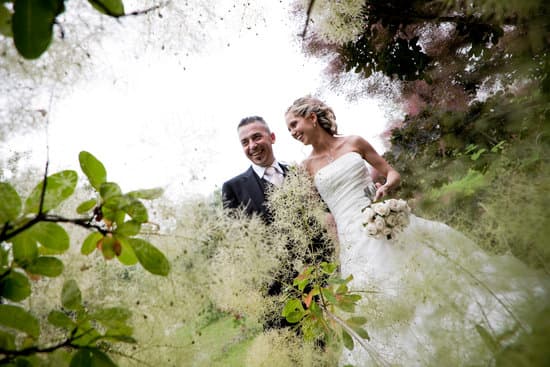When it comes to weddings, the tradition of exchanging rings symbolizes a couple’s commitment and love for each other. While much attention is often given to the engagement ring and its significance, the topic of who buys the male wedding ring can sometimes be overlooked in discussions surrounding wedding preparations.
Throughout history, wedding ring traditions have evolved, with different cultures and societies placing varying importance on the exchange of rings between partners. From simple bands made of grass or reeds in ancient times to elaborate diamond-studded rings in modern society, the symbolism behind the wedding ring has remained consistent – a token of love and unity between two individuals.
In today’s world, there has been a shift in perspectives when it comes to purchasing male wedding rings. While traditional beliefs may dictate that certain cultural norms determine who should buy the male wedding ring, changing trends towards gender equality and financial independence have influenced how couples approach this important decision. The factors influencing individual choices on buying male wedding rings are diverse, ranging from personal preferences to practical considerations about finances.
Historical Background
The tradition of wedding rings dates back centuries, symbolizing love, commitment, and unity between partners. While the focus has often been on the bride’s ring, the significance of the male wedding ring should not be overlooked. Historically, wedding rings were primarily worn by women as a symbol of ownership and fidelity to their husbands. However, the concept of men wearing wedding rings has evolved over time.
In ancient Egypt, both men and women exchanged rings made from materials like hemp or reeds as a symbol of eternity. The Romans also had a tradition of giving iron rings to signify strength and permanence in marriage.
It wasn’t until World War II that male wedding rings gained popularity in Western culture when soldiers wanted a tangible reminder of their loved ones while away at war. This shift marked a turning point in the acceptance and importance of male wedding bands.
In today’s society, there is no set rule on who buys the male wedding ring. Traditionally, it may have been the responsibility of the groom or his family to purchase both rings as a symbol of commitment.
However, with changing societal norms and gender equality movements, couples now often split the cost or choose rings together based on personal preferences. Ultimately, the decision on who buys the male wedding ring comes down to individual circumstances and beliefs within each couple.
Modern Perspectives
Shift in Traditions
In recent years, there has been a noticeable shift in the traditional roles when it comes to purchasing the male wedding ring. Previously, it was common for the woman to buy both her engagement ring and the man’s wedding band. However, as societal norms evolve and gender roles become more fluid, many couples are now opting for a more equitable approach to purchasing their rings.
Joint Decision-Making
Couples today often view the purchase of wedding bands as a joint decision that reflects their commitment to each other. This collaborative process allows for discussions about preferences, budget constraints, and personal values. By considering each other’s input and reaching a mutual agreement on who buys the male wedding ring, couples can strengthen their bond and start their marriage on a foundation of shared decision-making.
Personalization and Individualism
Another trend that has emerged in recent years is the emphasis on personalization and individualism in choosing wedding rings. For some couples, this means customizing their rings to reflect their unique personalities or love story.
In such cases, the decision of who buys the male wedding ring may be based on factors such as design preference or sentimental value rather than traditional expectations. Ultimately, what matters most is that both partners are comfortable with how they approach this important symbolic purchase.
Traditional Beliefs
In many cultures and traditions, there is a strong emphasis on the man purchasing the wedding ring for his bride as a symbol of his commitment and love. This age-old practice stems from historical norms where men were seen as the primary breadwinners and providers for their families. As a result, the responsibility of buying the male wedding ring fell on the groom as a way to showcase his ability to provide for his future spouse.
However, in modern times, these cultural norms are being challenged as more couples are opting for equality in their relationships. This shift has led to discussions about who buys the male wedding ring and whether it should solely be the groom’s responsibility. Some couples choose to split the cost of both rings evenly, while others may have different arrangements based on their financial situations and personal beliefs.
Ultimately, the decision of who buys the male wedding ring is a personal one that should be made by the couple based on their individual circumstances and values. While traditional beliefs may still play a role in some ceremonies, it is essential for couples to communicate openly about their expectations and come to a mutual agreement that reflects their relationship dynamics and shared values.
| Cultural Norms | Male Wedding Ring Purchases |
|---|---|
| Historical Traditions | Responsibility falls on groom |
| Modern Trends | Couples opt for equality in purchases |
| Personal Decision | Based on individual circumstances and values |
Practical Considerations
Cost Sharing in Modern Relationships
In today’s society, the traditional expectations around who buys the male wedding ring are changing. With more couples sharing financial responsibilities and decision-making, the cost of purchasing wedding rings is often split between partners. This shift towards a more equal distribution of expenses reflects the evolving dynamics of modern relationships. Many couples see the purchase of wedding rings as a shared investment in their future together, rather than a burden on one individual.
Budgeting for Wedding Expenses
When it comes to practical considerations in buying the male wedding ring, budgeting becomes a crucial factor for many couples. Setting a realistic budget for wedding expenses, including rings, can alleviate financial stress and ensure that both partners are comfortable with the amount spent. Some couples opt for more affordable options or choose to customize their rings to fit within their budget while still having meaningful symbols of their commitment.
Financial Planning for the Future
Considering the purchase of a male wedding ring as part of broader financial planning is becoming increasingly common. Couples may discuss their long-term financial goals, savings plans, and how purchasing wedding rings fits into their overall financial strategy.
By approaching this decision from a practical standpoint, couples can make informed choices that align with their values and priorities as they start their life together. Ultimately, who buys the male wedding ring can vary greatly depending on each couple’s unique circumstances and mutual agreements.
Gender Equality
In modern times, there is a growing trend towards shared responsibilities and decision-making in relationships, including financial matters such as purchasing expensive items like wedding rings. Many couples today choose to discuss and decide together on the purchase of wedding rings, regardless of traditional norms or expectations. This shift reflects a deeper commitment to equality and mutual respect between partners.
When it comes to who buys the male wedding ring in a relationship, there are no hard and fast rules. Some couples still adhere to traditional beliefs where one partner takes on the responsibility for purchasing both rings, while others opt for a more equal division of expenses.
Ultimately, what matters most is open communication and agreement between partners on how they want to approach this significant aspect of their union. In today’s society, it is essential for couples to consider their own values and beliefs when making decisions about purchasing wedding rings, rather than feeling constrained by outdated stereotypes or expectations.
- Equality in decision-making is key
- Communication between partners is vital
- Personal values should guide purchasing decisions
Personal Preferences
When it comes to who buys the male wedding ring, personal preferences play a significant role in influencing individual decisions. In today’s society, there is a growing shift towards couples making joint decisions on purchasing both the engagement and wedding rings, including the one for the groom. This change reflects a move towards equality and shared responsibility within relationships.
Some couples may choose to follow traditional beliefs and customs when it comes to buying the male wedding ring, where the bride’s family covers the cost of both rings. However, many modern couples are breaking away from these norms and opting to split the cost or have each partner purchase their own ring. This shift signifies a departure from gender-specific roles in weddings and a move towards more egalitarian relationships.
Factors such as financial situations, individual preferences, cultural backgrounds, and personal values all play a role in influencing who buys the male wedding ring. Some may prioritize budget-friendly options while others may place more emphasis on finding a ring that holds sentimental value or aligns with their personal style. Ultimately, the decision on purchasing the male wedding ring should be based on open communication between partners and mutual respect for each other’s opinions and values.
Etiquette and Advice
When it comes to the tradition of wedding rings, there are often specific expectations and etiquettes that surround who buys the male wedding ring. In many cultures, it has been customary for the person proposing to purchase both engagement and wedding rings for their partner. However, in modern times, these traditions have evolved, and there is a greater sense of flexibility when it comes to purchasing wedding bands. So, who exactly buys the male wedding ring?
Here are some common scenarios that dictate who typically purchases the male wedding ring:
- Joint decision: Many couples now opt to make joint decisions on purchasing their wedding rings. This allows both partners to be involved in selecting rings that reflect their personal style and preferences.
- Shared expenses: Some couples choose to split the cost of the wedding rings equally. This approach can help alleviate any financial burden on one person and promotes equality in the relationship.
- Groom’s family: In certain cultures or families, it may be traditional for the groom’s family to purchase his wedding band as a symbol of their support and commitment to the marriage.
Ultimately, the decision of who buys the male wedding ring should be based on what works best for each individual couple. It is essential to have open and honest conversations about expectations, financial capabilities, and personal preferences when navigating this decision-making process. Communication is key in ensuring that both partners feel comfortable with how they handle purchasing their wedding bands.
Conclusion
In conclusion, the tradition of wedding rings has evolved over time, with male wedding rings becoming more prevalent in modern society. While historically men may not have had a prominent role in the selection or purchase of their wedding ring, changing trends and attitudes have shifted this dynamic. Today, there is a greater emphasis on equality in relationships, including the decision-making process when it comes to who buys the male wedding ring.
Cultural norms and traditions that once dictated who should buy the male wedding ring are being challenged as couples seek to make decisions based on personal preferences and practical considerations rather than outdated expectations. Financial implications also play a significant role in determining who purchases the male wedding ring, with some couples opting to split the cost or choose alternative options that align with their budget.
Ultimately, the significance of the male wedding ring lies in its symbolism of commitment and unity between partners. Regardless of who buys the male wedding ring, what truly matters is the love and dedication shared between two individuals as they embark on their journey together. As society continues to evolve, so too will the traditions surrounding wedding rings, reflecting the ever-changing landscape of relationships and marriages in today’s world.
Frequently Asked Questions
Who Is Supposed to Get the Man’s Wedding Ring?
Traditionally, it is the responsibility of the woman to purchase the man’s wedding ring. This tradition has been upheld for many years, with the man typically only needing to focus on buying the woman’s engagement and wedding ring.
Does the Woman Buy the Men’s Wedding Ring?
In most cases, the woman does not buy the men’s wedding ring. The responsibility falls on the man to purchase his own wedding band, while the woman usually takes care of her own rings. However, some couples may choose to deviate from this tradition and decide together who will buy the rings.
Does a Woman Buy a Man an Engagement Ring?
While it is less common for a woman to buy a man an engagement ring, it is not unheard of in modern relationships. Some couples opt for matching engagement rings or decide together who will purchase them. Ultimately, it comes down to personal preference and what feels right for each couple.

I have been involved in marriages for over 20 years helping couples and singles understand more about them.





